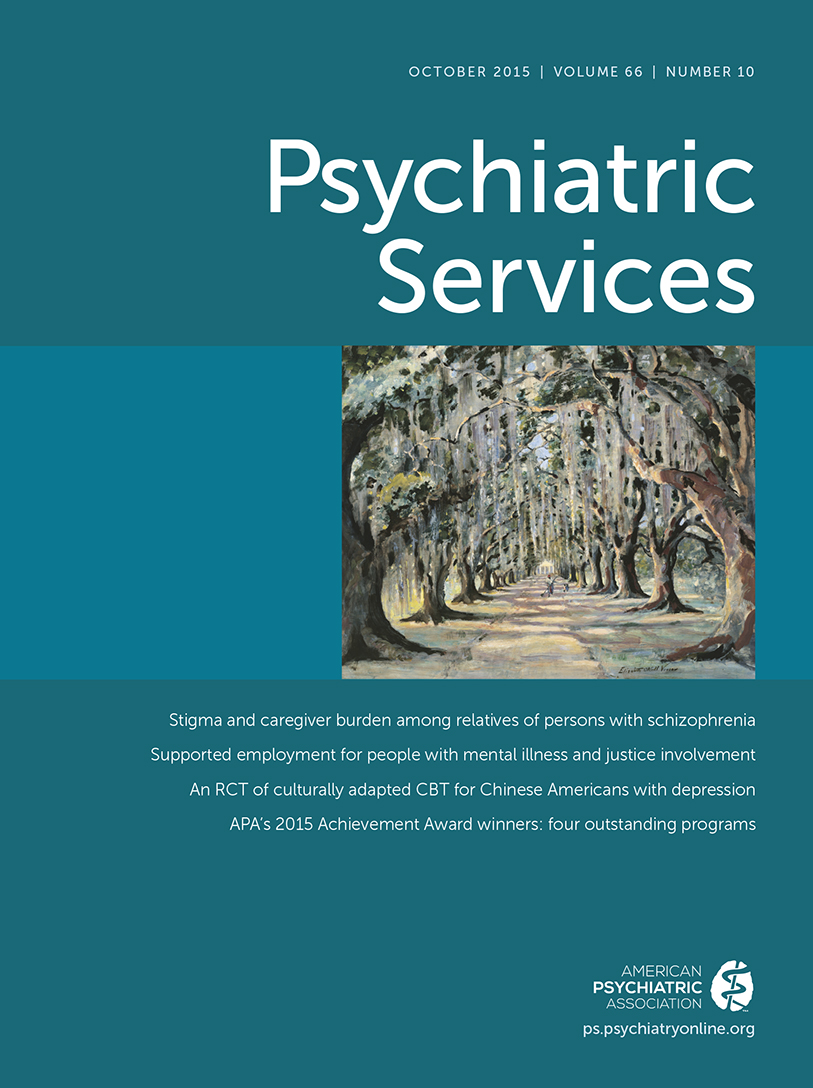Preventing First Hospitalization for Psychosis: In Reply
IN REPLY: We thank Dr. Cook for giving us the opportunity to further describe the benefits of communitywide intervention for preventing first-episode psychosis (FEP). He asserts that it is implausible to have a larger number of prevented FEP hospitalizations than the number of patients treated by the PIER clinical team. That ignores the fact that the PIER program was established as a system to reduce the incidence of FEP across an entire midsized urban area—Greater Portland, Maine. It was assumed that young people at risk of FEP would benefit from treatment provided through many pathways to care, if treatment was provided prior to the onset of frank psychosis. This indicated prevention design was modeled after similar, successful approaches for cardiovascular disease and common cancers. The design of the PIER program put major emphasis and effort into educating as large a proportion of the population as resources allowed. A total of 7,270 professionals were educated, and a public education campaign in 2001–2007 disseminated information about early identification and the potential importance of early intervention across the general population.
As we described in a 2010 report in this journal (1), over the study period 780 referred individuals who were demographically eligible for the PIER program were received by the PIER intake staff. Most of these individuals were deemed by both the referring clinicians and the PIER clinicians to be at elevated risk of psychosis. [A figure showing the disposition of PIER contacts from 2001 to 2007 is included in an online supplement to this letter.] After rigorous assessment, 148 of those referrals were found to meet strict criteria for being at risk, of which 138 entered treatment with the PIER clinical team. Following PIER program policy and as required by the program’s funders and by the Maine Medical Center Institutional Review Board, all youths referred received a direct referral for care, either to the PIER team itself or to other appropriate regional services. A total of 497 youths who did not meet criteria according to the Structured Interview for Prodromal Syndromes or who preferred treatment elsewhere were referred out. Of these referrals, 79 were found to be at an early stage of full psychosis. Very few of these 79 individuals were hospitalized, because they rarely met usual hospitalization criteria (risk of harm to self or others). In addition, PIER clinical staff often consulted with the clinicians who received referrals on methods for preventive intervention. Thus, given the regional awareness campaign and with almost 500 cases over 6.4 years originally referred to PIER for presumed early psychosis and systematically referred out for treatment, it is not difficult to account for the small number (51) discrepant between those actually treated by the PIER team (138) and the observed reduction in FEP hospitalizations (189).
The other objections are not relevant to the study’s major conclusion: the PIER program effected a large and significant reduction in first hospitalizations for psychosis. Whereas we calculated that 189 cases were prevented during the study period, for instance, Dr. Cook calculates 234 cases prevented. This apparent discrepancy arises because our difference equation model, which involved a moving average, had 16 fewer effective observations than the actual number. The actual number of observations yielded 234 prevented hospitalizations. The smaller number of effective observations yielded the more conservative estimate of 189 prevented cases, which is a maximum-likelihood estimate by definition. This apparent discrepancy is not relevant to the study’s major conclusion.
The objections raised are also addressed by the growing literature on the multiple pathways to care in early intervention strategies (2,3). Other pathways include earlier treatment for mood and severe anxiety disorders and suicidality preceding the onset of prodromal psychosis, as well as day hospitalization and hospitalization for nonpsychotic disorders. For instance, manic psychosis is an end state, associated with the duration of untreated bipolar disorder, as is psychosis in schizophrenia (4). Earlier and effective intervention for nonpsychotic bipolar disorder would likely avert its psychotic end state. Over time, an early identification system substantially reduces the time between onset of prodromal symptoms and entry into care, thereby reducing severity and allowing prevention of onset with less intensive treatment (5).
The current recommendation for PIER model replication is that the full FACT model be reserved for those who are unable to use clinic-based services (owing to logistics, family disorganization, distrust of clinicians, and so forth). Over time, it has become clear that this group is a minority in most communities, thereby reducing the costs of PIER prevention programs.
1 : Portland Identification and Early Referral: a community-based system for identifying and treating youths at high risk of psychosis. Psychiatric Services 61:512–515, 2010Link, Google Scholar
2 : Pathways to care for first-episode psychosis in an early detection healthcare sector: part of the Scandinavian TIPS study. British Journal of Psychiatry. Supplement 48:s24–s28, 2005Crossref, Medline, Google Scholar
3 : Understanding delay in treatment for first-episode psychosis. Psychological Medicine 34:255–266, 2004Crossref, Medline, Google Scholar
4 : Misdiagnosis, duration of untreated illness (DUI) and outcome in bipolar patients with psychotic symptoms: a naturalistic study. Journal of Affective Disorders 182:70–75, 2015Crossref, Medline, Google Scholar
5 : Declining transition rates to psychosis: the contribution of potential changes in referral pathways to an ultra-high-risk service. Early Intervention in Psychiatry 9:200–206, 2015Crossref, Medline, Google Scholar



